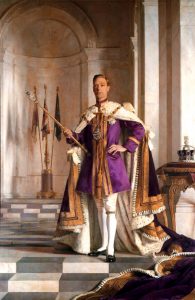Sable vestments
‘Sable vestments’ is Robert Bury’s and W.R.M. Lamb‘s translation of the Greek kuanon stolen in Critias 120b which describes the ceremonies of the Atlantean rulers when they meet. At first sight it appeared to me that this might be a reference to a need for fur robes implying a cold northern climate, compatible with the habitat of the sable.
Atlantean rulers when they meet. At first sight it appeared to me that this might be a reference to a need for fur robes implying a cold northern climate, compatible with the habitat of the sable.
Anton Mifsud advised me that the Greek text more correctly translates as ‘dark-blue garments’ confirming both Jowett and Thomas Taylor, who translate kuanos as ‘azure’. Other translations on offer are ‘dark blue‘ (Lee), ‘steel blue‘ (Wells) and ‘purple‘ (David Horan). It is more commonly referred to nowadays as ‘Tyrian purple’.
>Into this mix we must throw the fact that the ancient Greeks had no word for ‘blue’. They were not alone as “There isn’t a single term for “blue” in Russian. The two phrases “galoboy” and “sini,” which are typically translated as “light blue” and “dark blue,” are used instead. Nevertheless, for Russians, these words refer to two entirely distinct colors rather than two variations of the same color.”(a)<
If this reference to azure robes was actually recounted to Solon, and not just a Platonic embellishment, it places Atlantis in the 2nd millennium BC, which was when the earliest reference to the production of ‘Tyrian dye’ by the Phoenicians is recorded (See: Murex). The use of purple and indigo clothing was a fashion statement by the political and religious elite that lasted for at least three millennia, which can be seen on the coronation portrait of Britain’s King George VI.

